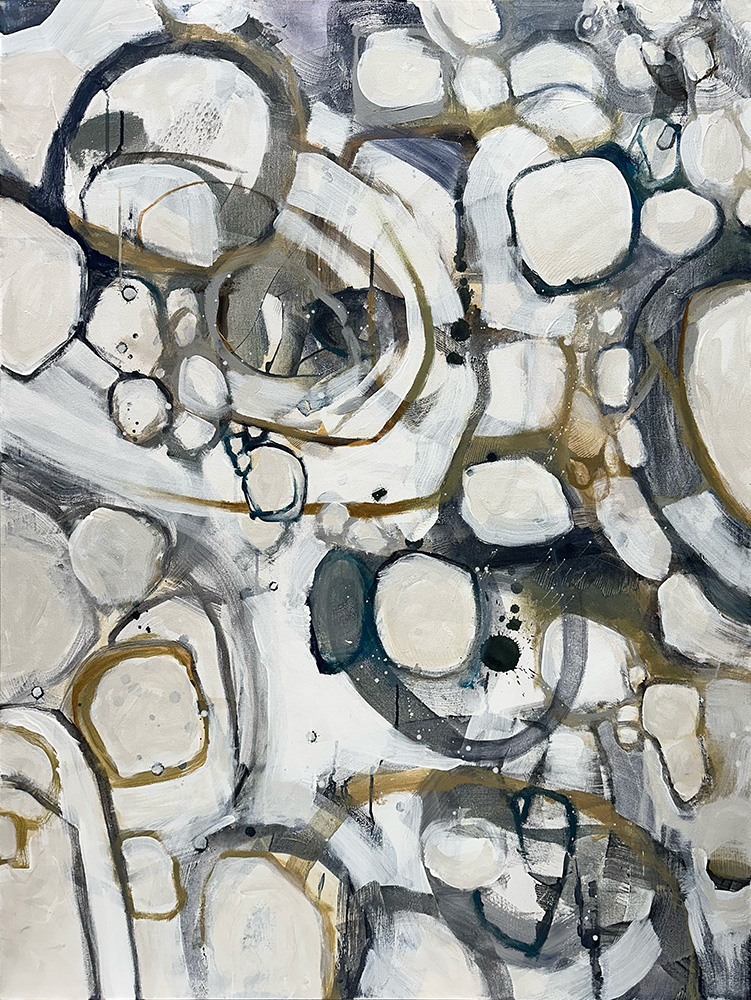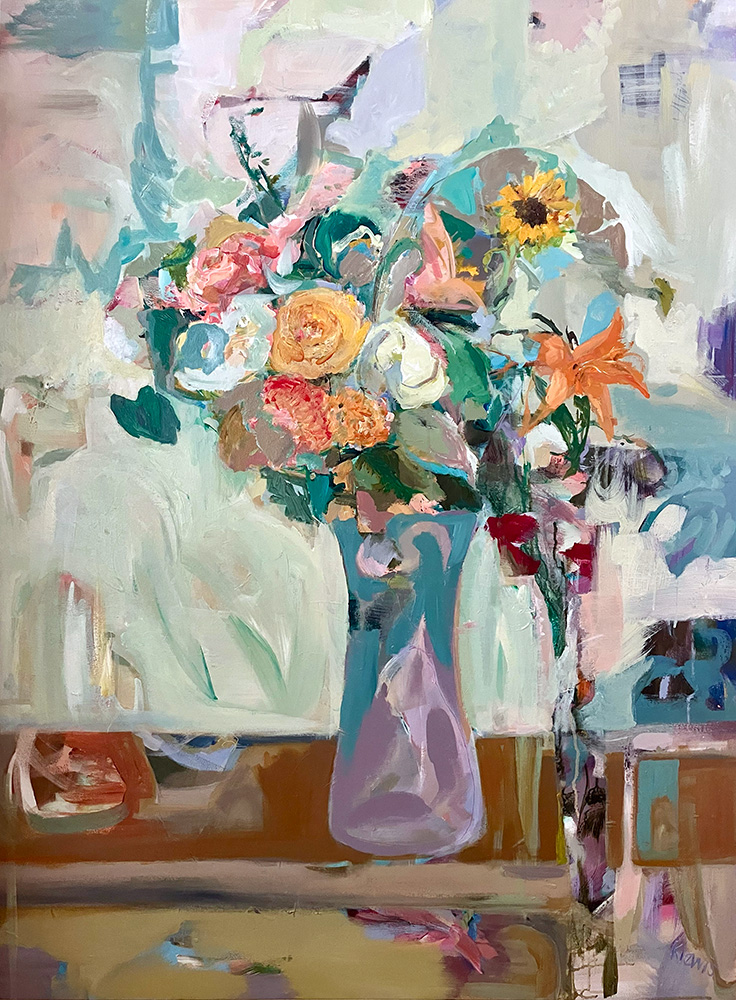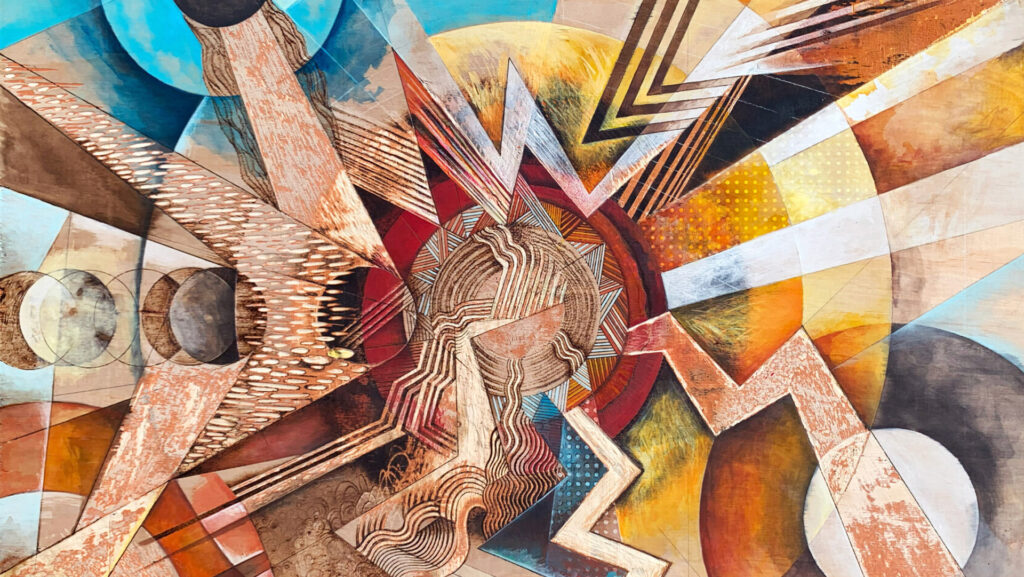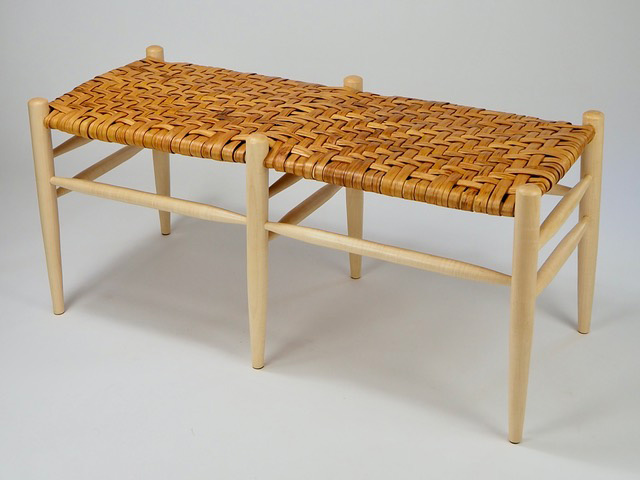
This event has passed.
Featured Artists Exhibit Aug/Sep 2024
August 13, 2024 – September 21, 2024
Featuring member artists R. Scott Horner, Kaidy Lewis and guest artists John Parkinson and Fabrizio Bianchi.
Opening Reception: August 23 from 6-9 pm
Coffee with FRANK live painting by Horner and Lewis: September 7 at 10 am
Special Talk on ART and AI by Horner: September 18 at 6 pm

R. Scott Horner
Scott’s paintings in this exhibit come from a series called Water on Stones. He captures the essence of the water/stone duality with exciting marks and shapes that delivers a pleasing presence. For Scott, water creates and destroys. It also distorts our vision. In one glance we see a refracted view of what’s below and a reflection of what’s above. Stones record the flow of water and time. Each mark reports past events. Sharp edges and hard angles tell of quick, violent actions. Round, smooth areas show the erosion of centuries of moving water.
Kaidy Lewis
Kaidy presents us with complex compositions that hint at a human presence. In her new series of paintings, the artist contemplates the increasing number of multiverses we are able to experience. The subjects of her semi-abstract paintings are both familiar and strange. You’ll notice inanimate objects as well as suggestions of people. In her work, Kaidy uses bold and gestural marks that both subvert reality and describe it at the same time.


Fabrizio Bianchi
Fabrizio’s work is his expression of what he calls a Venn diagram radiating from traversing ovals of duality. They represent his view of North and Latin American cultures, digital and traditional art, tranquility and chaos, and precision and spontaneity. His tools include inks and wood burning which results in compositions that “cannot exist without the synchronous blend and clash of fire and water.” Look closely and you may see echos of cultures that shaped Fabrizio: graffiti in Buenos Aires, Argentina; the imaginary landscapes of Italian futurists, Chilean Surrealist Roberto Matta; and the timeless writings of Jorge Luis Borges.
John Parkinson
The wood furniture pieces John builds show clean elegant lines, incorporating quiet details and accents that enhance visual vitality. He uses traditional hand tools and machinery to craft these beautiful and functional works of art. John says his “deepest satisfaction comes from designing a piece that both the owner and viewer find useful and interesting.”



